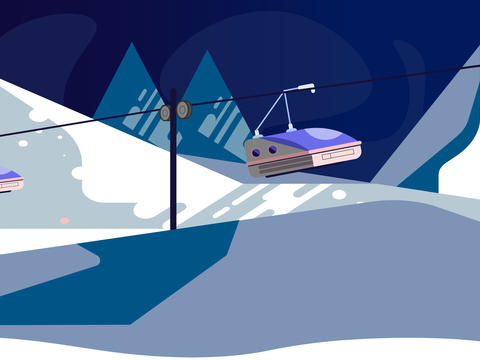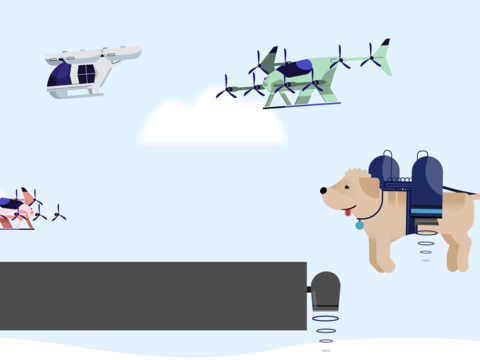The world of emergency missions
This series brings to life some of the varied situations where helicopters operate, particularly in terms of the critical missions they undertake.
Those videos aim to foster an interest in STEM (Science Technology Engineering and Math) topics, but they also introduce a young audience to the many careers that may come into contact with helicopters, including doctors, firefighters and search and rescue professionals.
They can prompt discussions around serious subjects such as fires (and climate change more broadly), the importance of being good custodians of our planet, and the realities of what could happen in an emergency situation.
First, watch the videos
-
 1. Helicopters - What’s so special about helicopters?
1. Helicopters - What’s so special about helicopters?
1. Helicopters - What’s so special about helicopters?
There are many different vehicles and modes of transport in the world, but there’s one that can go where others can’t, because it can take off and land vertically: the helicopter! This video presents examples of how helicopters excel in emergency situations and in hard-to-reach areas.
The video ends with a question: children are asked about their favourite way to travel. Skating, cycling, or even reading a book? -
 2. Helicopters - A mountain rescue
2. Helicopters - A mountain rescue
2. Helicopters - A mountain rescue
In this second video, the scene takes place on Mont Blanc, the tallest mountain in Europe. Someone is injured and needs help. This video focuses on mountain rescue, including how the helicopter is ideally placed to intervene quickly, and celebrates the valuable role played by doctors and mountain rescuers.
The video ends with a question: children are asked where they would go to rescue people with a helicopter? One suggestion is a burning forest, which makes the link with the 3rd video in the series. -
 3. Helicopters - Fighting a forest fire
3. Helicopters - Fighting a forest fire
3. Helicopters - Fighting a forest fire
In the third and final video, we see how the helicopter is perfectly adapted to a firefighting situation. We see how the helicopter supports the efforts to combat a forest fire, from transporting firefighters to fight the fire in close-quarters to dropping water on the fire from above.
With rising global temperatures and an increase in the incidence of fires, the final question invites children to think about how they would protect the forest.
Then, do the activities
Activity sheets
Design your own helicopter - Activity Sheet
Spot the 7 differences - Activity sheet
Activity sheets
Design your own helicopter - Activity Sheet
Spot the 7 differences - Activity sheet
And test your knowledge
A. What are the key advantages of a helicopter?
1.It can fly quickly
2.It can reach places that other types of vehicle cannot access
3.It can make stationary flight
B. Compared to a car, how fast can a helicopter go?
1.Twice
2.Ten
3.Twenty
C. Which part of a helicopter allows a medical team to undertake a rescue when the helicopter can’t get close to the ground?
1.The blades
2.The hoist
3.The stretcher
D. Do the medical team descend on the stretcher?
1.Yes
2.No
E. Put these events in the right order:
1.The injured person is put onto the stretcher
2.The medical team performs first aid
3.The helicopter is stabilised
F. Put these events in the right order:
1.The firefighters create a ‘firebreak’
2.The firefighters are dropped from the helicopter
3.The helicopter drops water from its tank or bucket.
G. If there is a nearby water point, how frequently can a helicopter drop water onto a fire?
1.Every 2-3 minutes
2.Every 5 or 6 minutes
3.It is not said in the video.
Answers:
A. All of them!
B. Twice as fast, but we are pretty sure that they will go even faster very soon thanks to upcoming innovations – watch this space!
C. This is the hoist, but the stretcher can be used too thanks to the hoist!
D. No, the medical team does not need to ride in the stretcher to descend; the stretcher is reserved for the injured person!
E. 3 - 2 - 1
F. 2 / 1 & 3 simultaneously.
G. 1.




